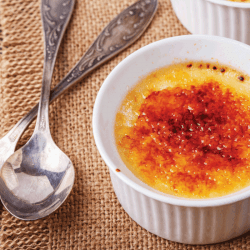Soufflé is often served in classic white porcelain or colorful ceramic dishes. But what if you only have glass baking dishes? Can you still make a soufflé? We've studied this issue to separate the fact from the hot air, and here's what you need to know:
In general, ceramic soufflé dishes that are thick and purpose-made perform best. However, you can use glass ramekins or a glass soufflé dish instead of ceramic!
Try to use thick glass dishes with straight sides for the best results. You may find that your soufflé doesn't rise as high and may be more prone to overcooking in a glass dish, but it should still taste great!
The art of making a great soufflé can seem intimidating, but it needn't be. In this article, we'll take a closer look at the advantages and disadvantages of different soufflé dishes, the difference between a soufflé dish and a ramekin, and we'll even cover the process for making your very own cheese soufflé with a helpful video on chocolate soufflé too!
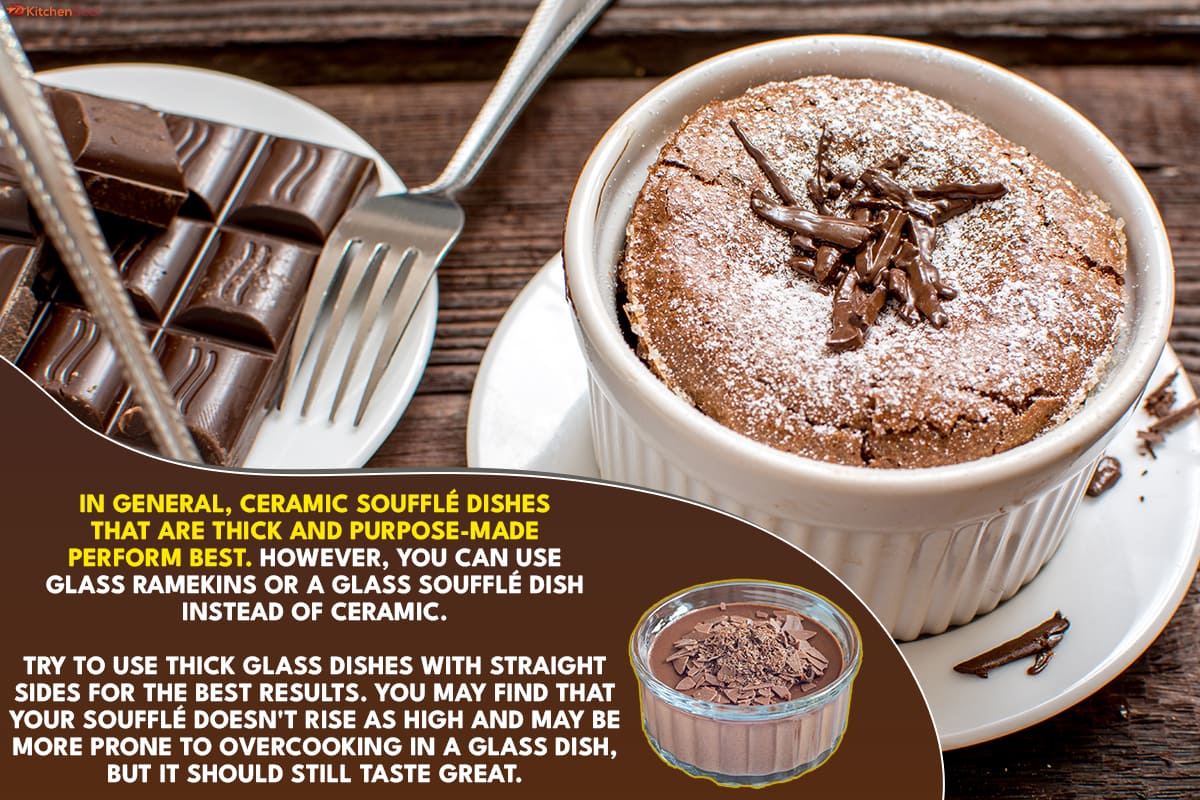
Glass vs Ceramic Soufflé Dishes
There are a number of great ramekins and large soufflé dishes on the market. Traditional options are made of ceramic materials, but you can also find many great glass dishes too!
You are likely to get the best results if you stick with a ceramic dish in the traditional style. These have straight sides and a rim around the top that is slightly wider than the rest of the dish. The thicker and heavier the dish, the better. These get the best rise and most even cooking. They can get pricy, though.
Click here to see this ceramic ramekin from Le Creuset on Amazon.
That being said, you can make great soufflés in glass dishes too. One thing to be careful of with glass is that it can shatter easily. Look for glass that is tempered, as it can handle the heat more similarly to ceramics.
In terms of form, the same rules apply to glass as ceramic. Look for dishes with straight sides that are thick and heavy, like the ones from Duralex below. These will help your soufflé cook evenly and rise high.
Click here to see these Duralex glass ramekins on Amazon.
Even with the best glass dishes, you might not get as high a rise out as with ceramic. It will still rise plenty to make sure your soufflé is light and fluffy, but if you're looking for a jaw-dropping rise ready for Instagram, you may be better off with a ceramic dish.
What's the difference between ramekins and soufflé dishes?

You may come across the words "ramekin" and "soufflé dish" when checking out recipes. You may have even noticed us using both words in this article so far. But what is the difference?
Well, some soufflé dishes are ramekins, and some ramekins are soufflé dishes, but not all soufflé dishes are ramekins nor are all ramekins soufflé dishes. Confused yet? Let's explain a bit more clearly.
Small soufflé dishes are also ramekins. These can be used to make single servings of soufflés. However, there are also ramekins, like the ones below, that are for serving nuts, sauces, or even single-serving baking, but do not have the right shape for making soufflés. These are ramekins that are not soufflé dishes.
Click here to see these glass ramekins on Amazon.
And, as we mentioned, there are also soufflé dishes that are not ramekins. These would be large soufflé dishes, like the one below. These dishes make soufflés that are meant to serve multiple people.
Click here to see this 2-quart soufflé dish on Amazon.
Of course, you can use these large soufflé dishes for other purposes as well, but they are too large to be considered ramekins.
How to Make a Soufflé
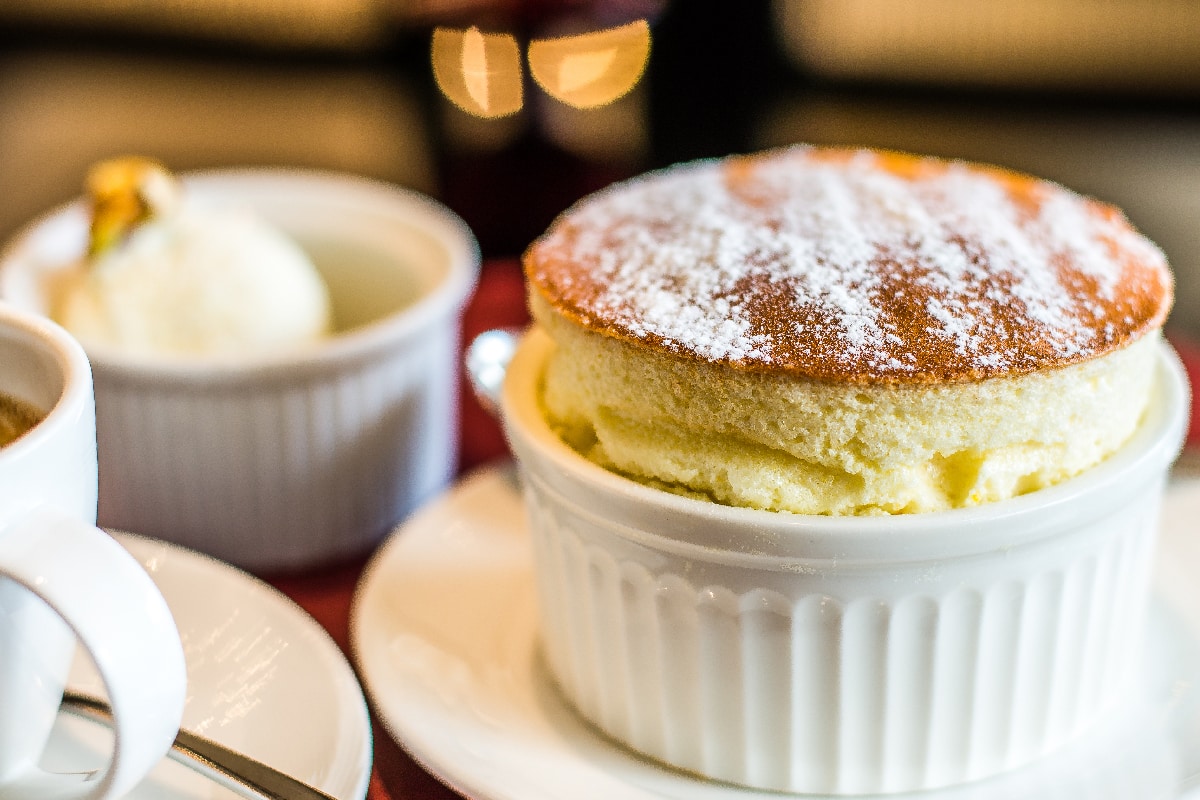
There are many types of soufflé, both savory and sweet. But these dishes all have a common technique which earns them the name soufflé, which comes from the word "breathe" in French.
This method involves adding flavorful ingredients to whipped egg whites, then baking in the oven so the bubbles trapped in the egg whites expand, giving this dish its characteristic rise.
While this general technique is what makes a soufflé a soufflé, the specifics vary greatly from recipe to recipe. We'll take a closer look at one of the most popular types of soufflé: cheese.
How to Make a Cheese Soufflé
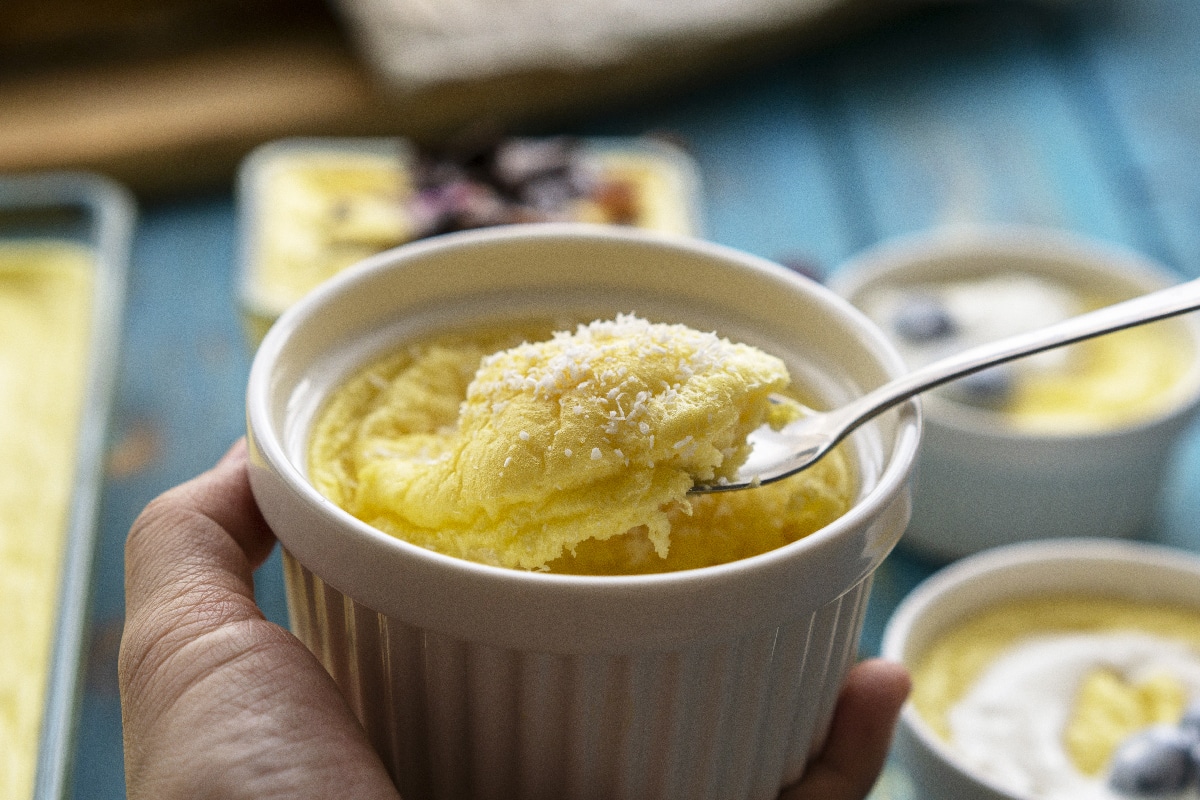
Let's start with the savory stuff: cheese soufflé. There are a number of great recipes available, but the method we'll outline is based on this one from Food and Wine Magazine. It follows a classic method of making a mornay sauce and adding egg yolks before mixing it in with the egg whites. Let's take a closer look at each step.
1. Preheat the oven and prepare the dish with butter and parmesan.
Set the oven to 370º Fahrenheit.
As the oven preheats, prepare your soufflé dish(es). The original recipe uses a 1.5-quart soufflé dish for a single, large soufflé, but you could also divide it into eight 6-ounce ramekins.
To prepare the dish or dishes, rub the insides with butter to coat them completely. Then, add in some grated parmesan and roll the dish around so that the butter is covered in cheese. Dump out any extra cheese left.
2. Prepare a thick bechamel.
To make your bechamel, you first need to melt 3 tablespoons of butter in a large pot on medium-high. Once the butter is melted, stir in 3 tablespoons of all purpose flour and cook them together until they form a paste.
Whisk in 1 1/4 cups of heavy cream, adding it slowly to avoid forming clumps. Once it's all added and bubbling, reduce heat and continue whisking until it is very thick.
3. Add cheese and other ingredients to bechamel.
Here's where the flavor comes in. Pour the bechamel into a large bowl and add in: 4 egg yolks, 3 tablespoons of a dry sherry, 6 ounces of shredded Gruyere, 2 tablespoons of sour cream, 1 1/4 teaspoon of kosher salt, 1 teaspoon of Dijon mustard, 1/2 teaspoon of dry mustard, 1/4 teaspoon of cayenne, and 1/4 cup of parmesan.
Mix this together until it becomes homogenous.
4. Whip egg whites
You'll need the whites from the 4 yolks used earlier as well as 3 more egg whites for a total of seven (you can save the 3 unused yolks for another recipe, such as hollondaise). You can add 1/4 teaspoon of cream of tartar to help the egg whites set.
Make sure the oven and everything else is ready, because you'll want to move quick once the egg whites are whipped. Whip the egg whites to stiff peaks. The video below shows how to identify stiff peaks:
5. Fold together the cheese mixture and the egg whites.
To combine the cheese mixture and the egg whites, you'll want to fold them in instead of stirring them in. This means using a spatula or large spoon to gently combine them while saving as many air bubbles as possible.
One way to do this is to add just 1/3 of the egg whites first and mix it in well. Then add the rest, gently folding until you have just removed any streaks.
The video below demonstrates folding in egg whites for a chocolate soufflé, but the technique is the same for this cheese soufflé as well:
6. Spoon the mixture into the dish and bake.
Next, you'll spoon or scrape the mixture into the dish (or dishes if making individual servings). It can get a little messy, so tidy up the outside of the dish if any of the mixture gets on it.
Once you have the mixture in the dish, trace along the rim of the dish with your thumb or a towel. This will help the soufflé rise more in the oven.
If you are using multiple dishes, you can put them on a baking tray to make it easy to get them in and out of the oven.
Next, simply put the soufflé in the oven and bake! The original recipe calls for 35 minutes for a single, large soufflé. If you are making smaller soufflés, they may cook more quickly, so keep an eye on them! You want it to be golden, brown, and delicious as well as cooked through.
7. Take from the oven and serve right away!
Soufflé is best when served immediately. While the soufflé is baking, make sure that everything else is ready to go. That way, you'll be able to enjoy your tasty concoction at its peak!
Use Your Soufflé Technique
Many of the techniques you use to make a cheese soufflé will carry over to others as well, including sweet ones. Check out the video below, from Chef John, to see how to make a chocolate soufflé using many of the same methods:
Final Thoughts
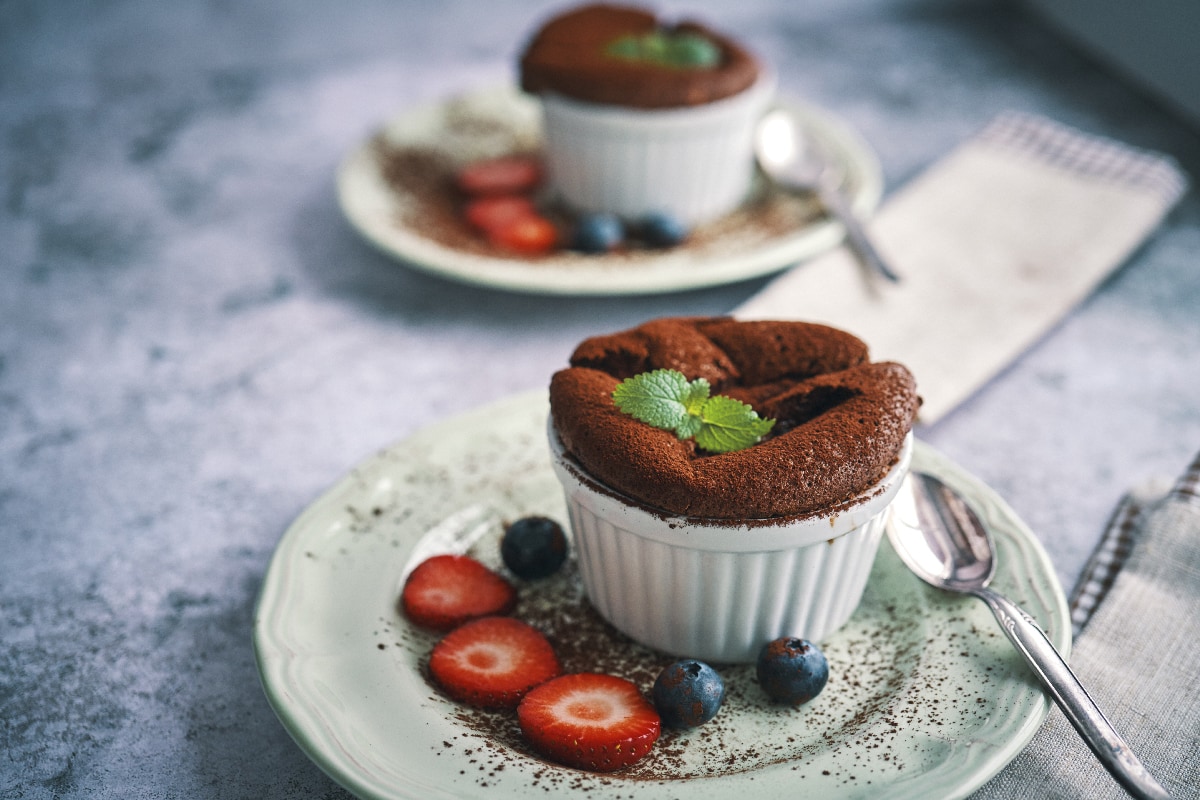
Serving up a perfect soufflé is a surefire way to step up your dinner game and impress your guests! Whether you use a glass or ceramic soufflé dish, you'll be able to serve some tasty fare. However, a heavy ceramic dish might get you a little more lift and flair.
Now you know more about soufflé dishes, ramekins, and even the technique for whipping up a cheese or chocolate soufflé. All that's left to do is to get whipping and enjoying!
Happy cooking and bon appétit!
If you found this article helpful, you may also like:
Do Ramekins Come in Different Sizes?
Can You Beat Eggs in a Food Processor? [Here's How To]





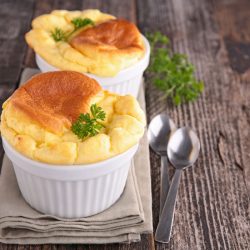

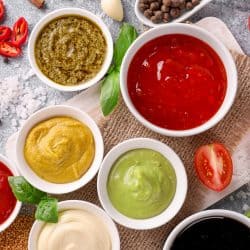
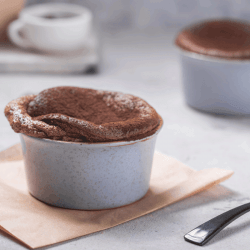
![Two ramekin with chak chak on a white table, What Is A Ramekin? [Pictures, Shopping Guide & Alternatives]](https://kitchenseer.com/wp-content/uploads/2020/05/Two-ramekin-with-chak-chak-on-a-white-table-250x250.jpg)
